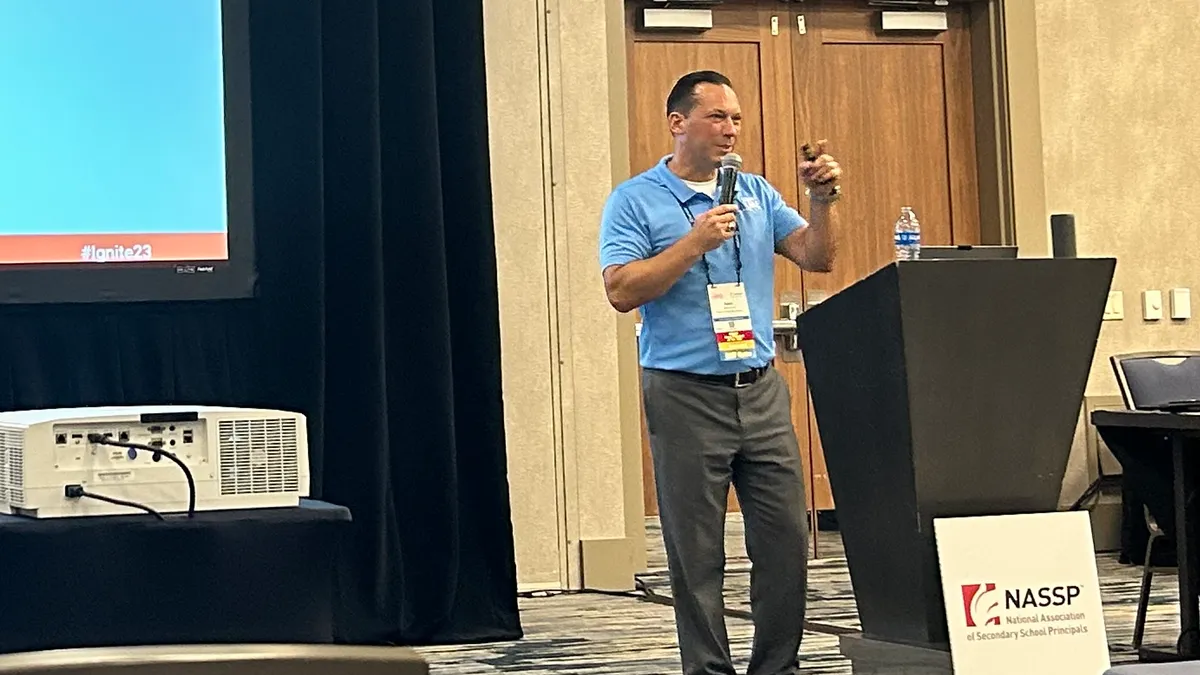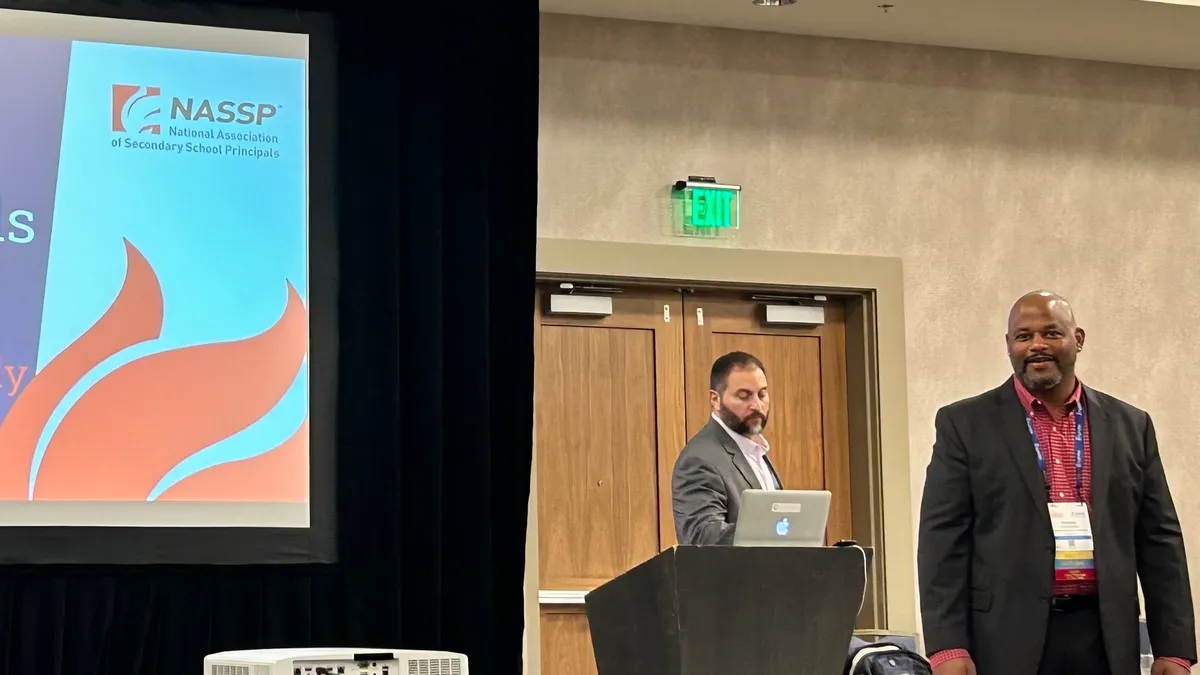DENVER — Great school leaders’ actions can snowball into significant gains for student engagement and achievement — but districts have to provide opportunities for educators to grow into those positions.
“Leaders have power. The problem is that we are not developing and growing leaders across the country in a consistent way,” said Kerensa Wing, a leadership coach at Gwinnett County Public Schools in Georgia. “You may be in a district that has a great leadership development program or you may be in a rural district that doesn’t have one, and your state may have one and you may not know about it.”
During a July 15 session at the National Association for Secondary School Principals annual conference, Wing and others offered best practices they've gleaned from implementing leadership development programs to help aspiring principals achieve that goal.
In one district, coaching plays a big role
Gwinnett County Public Schools, which is one of the 20 largest districts in the U.S., created the Quality-Plus Leader Academy in 2005 with three different pathways: the Aspiring Leader, Aspiring Principal and District Leader programs. Teacher interest is huge for these programs, with over 500 teachers applying to enroll in the assistant principal track through the Aspiring Leader Program, Wing said. Only 101 were accepted this year.
Likewise, assistant principals in Gwinnett County looking to be principals can apply for the Aspiring Principal Program, which has about 50 participants this year, Wing said.
Once aspiring school leaders get into the swing of the program, they receive targeted coaching through individual sessions, small groups or virtual check-ins, she said. Wing, a former school principal, personally benefited from receiving district coaching during the first two years of her 12-year tenure as principal.
“I think that helped me, because I would probably not have made it past year three otherwise,” Wing said. “It was just tremendous, because you have that support. They’re checking on you constantly. They’re providing resources.”
Removing some barriers
In Hawaii’s leadership pipeline program, there’s no master’s degree requirement for an aspiring principal going through the Hawaii Certification Institute for School Leaders, which is run by the state’s education department. Instead, teachers are expected to complete seven university courses, which makes the position more accessible, said Winston Sakurai, principal of Kaʻōhao School in Hawaii.
“It’s expensive for them to go back to college,” Sakurai said. “We just need more principals, and if we required them to get a master’s degree, we wouldn’t have that many principals.”
The state’s leadership program can last between three to six years depending on the candidate, Sakurai said, and teachers begin the first year of the program as an intern working as a temporary assignment principal. If a teacher decides the principal track isn’t a right fit after the first year, they can still return to their teaching position without interfering with their existing job benefits.
Creating a stronger candidate pool
On a similar scale, a statewide program in Georgia provides an opportunity for assistant principals to earn the credentials needed to become a principal through the Georgia Association of Educational Leaders’ Aspiring Principals Academy. This year, the academy accepted 50 of its 72 applicants, said Wanda Law, associate executive director of the Georgia Association of Secondary School Principals.
Over the years, Georgia superintendents have consistently reached out to Law asking for candidates to fill principal positions. Because of this, Law is working with the Aspiring Principals Academy to create a stronger principal pipeline so she can suggest strong candidates for the roles when superintendents make those requests.
Once an assistant principal is accepted into the academy, they must attend in-person meetings for the program every month in addition to state conferences. Participants also work alongside an assigned mentor outside of their district.
Before stepping into a principal position, candidates must develop a 90-day plan for the first three months on the job. They receive a certificate after completing the academy and will be added to a candidate list that is accessible to all superintendents in the state, Law said.
“It’s really a pipeline that we are building that we feel is going to be very, very helpful for us, and the participants enjoyed it,” Law said.















